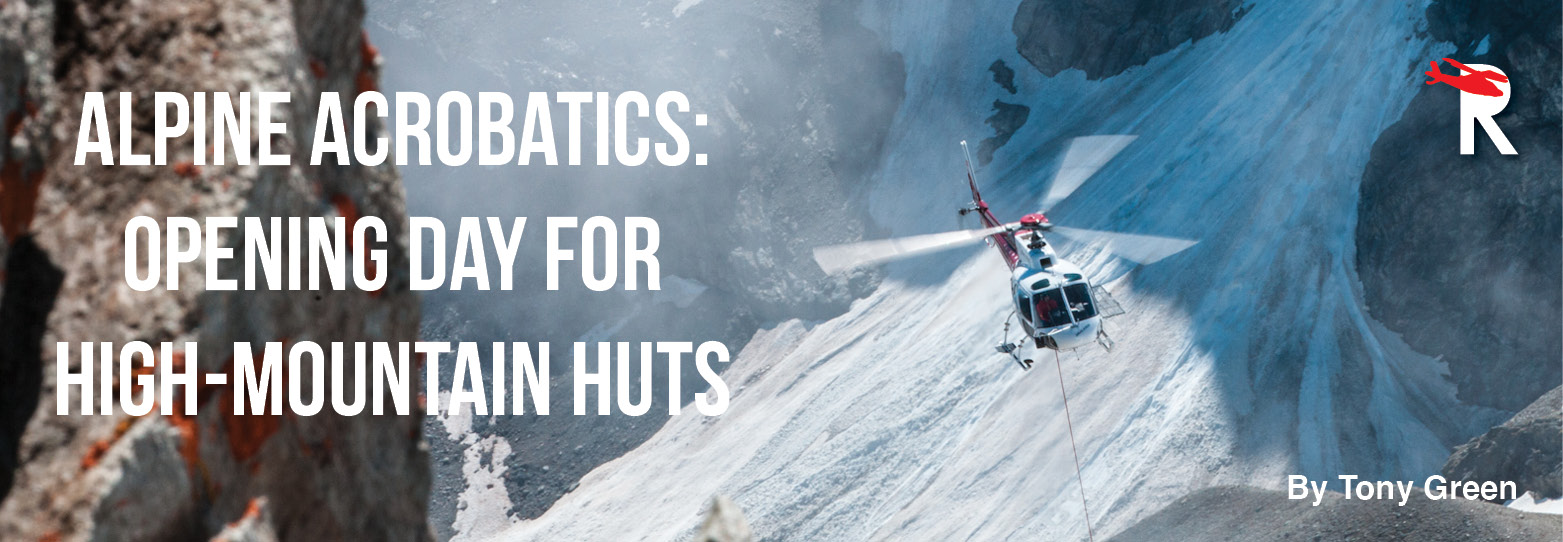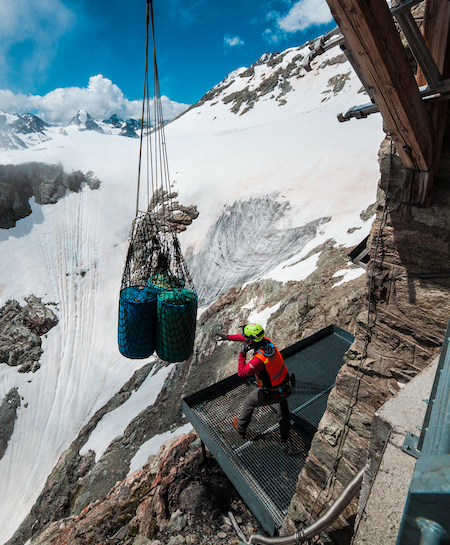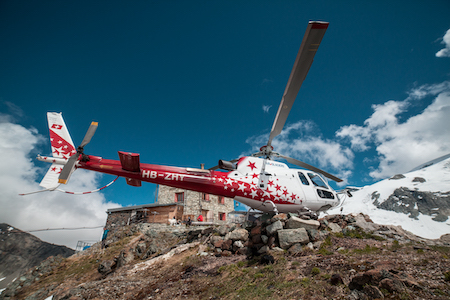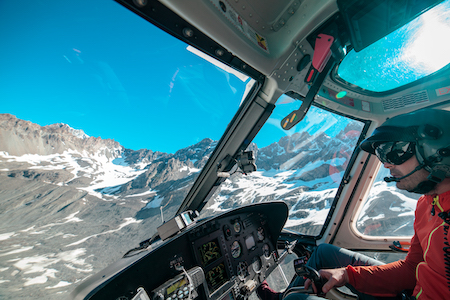|
Jan
31
2022
|
|
Posted 3 years 323 days ago ago by Admin
|
|

VIEW VIDEO
Since the 19th century, mountain huts high on the Arolla glacier have been maintained by the Swiss Alpine Club and its guardian/managers. These huts are an integral part of the Alps and local culture. For most of those decades the huts were supplied by people and animals. Beasts of burden and highly conditioned guides got the job done. The journey was long and dangerous because of uncertain, hostile weather. The extreme environment limited access to only a select, conditioned few.
Nowadays, restocking supplies and transporting people is done by helicopter. With a few minutes of flight, the helicopter delivers what would take days to do on foot. Up to 700 kilograms (approx. 1,500 pounds) of supplies are packed in bags big enough to give Santa envy. Helicopters make these mountain refuges surrounded by natural beauty accessible to more than the fitness elite. Food, gas, groceries, and wood are flown in a timely manner to serve adventurous travellers with an overnight, relaxing stay and hearty meals.

Most of the huts are far from any civilization and need regular provisions to properly function. They offer an overnight stay, meals, and a relaxing atmosphere to booked guests travelling through the Alps. Everything is quite basic; it almost takes you to another time when people were connected to each other and to nature.
To ensure a proper level of guest services, the most important tasks are to bring food, gas, groceries, and wood right on time, to take away waste and refuse, to safely transport hut staff during shifts, and of course organizing the huts’ openings and closings each season.
Restocking is now routine with helicopters, but the toughest operation is the reopening of the huts at the start of warmer weather. The aircraft then drop off hut manager/guardians for the restart, as well as operating equipment (eg., microwaves, radios, coffee machines, TVs, first aid kits, etc.) needed for survival and comfort.
Restocking missions continue as needed until the end of summer or even into early autumn, depending on weather conditions.
In the high season, the goal is to bring fresh food (meat, vegetables, water, milk, cheese) to feed guests and managers.
What’s it like to open these remote, high huts? We will briefly take you through the 2021 opening day flown by Air-Glaciers, a Swiss helicopter company founded in 1965 and based in Sion.
The company's crews and their helicopters with their emblematic decals are famed for mountain rescue operations, as well as for sulphating operations over Swiss vineyards
.
Air-Glaciers is contracted to resupply the huts by the overseeing club, but the relationship goes beyond strictly business as crews develop friendships with manager/guardians and are happy to give a helping hand–or flight––as needed.

Our opening day journey begins at a 6:00 am pre-flight briefing on Friday, 25 June 2021. The team of hut manager/guardians and crews schedule to takeoff at 8:00 from the Arolla Glacier helipad in the Swiss Valley to transport the manager/guardians, food, wood, gas and other supplies. The helipad is located at the beginning of the glacier, a strategic place that allows the helicopter to make its rotations as quickly as possible for three different huts.
This day will be devoted to supplying those huts: the Cabane des Vignettes located at 3,157 meters (approx. 10,400 feet) above sea level, the Cabane des Aiguilles Rouges at 2,810 meters (approx. 9,200 feet) and the Cabane des Dix at 2,928 meters (approx. 9,600 feet).
The first flight transports personnel responsible for receiving the goods at each hut and returns to the glacier to attach the first supply load. A slingline is carefully calculated and rigged to lower supply bags to each hut where the managers slit them open and unpack their contents of equipment and provisions. Everything is calculated with precision, and the most important factor is that the pilot assigned to the mission must be used to the flight locations and to the mission. Confidence between the pilot and the flight assistant is essential; at such high altitude no error is allowed. The places are hostile, the weather is capricious, and mountain fog wafts about.
Despite these challenges, by 1:00 pm a total of six rotations are completed per hut, with each roundtrip to each hut taking exactly 5 minutes. The flight cost per minute is high, and the aircraft flew as efficiently as possible to minimize costs. Opening day has finished successfully; that’s good because the first guests of the season are expected the very next evening. It has been a carefully choreographed acrobatic dance of precision and teamwork and the only work that remains is organizing the contents in each hut and hosting the flight teams for a family-style meal of “Rösti” (finely cut potatoes galette). A hearty mountain meal that will sustain the team for their next mission. After that, the next time a similar reunion will happen between flight teams and hut managers will be the autumn closures.

READ MORE ROTORCRAFT PRO NOV/DEC 2021 ISSUE